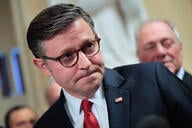You have /5 articles left.
Sign up for a free account or log in.
WASHINGTON -- At the center of the student loan interest rate fights in Congress in recent years has been a simple question: how much, if anything, does the federal loan program cost taxpayers?
A new federal report released Friday confirms what many observers already knew the answer to be: It’s complicated.
Specifically, the Government Accountability Office said that it's impossible to set interest rates on student loans in advance so that the government breaks even on the program. That's because it's difficult to accurately predict how much the loans will cost at any given point in time, according to the report, which was required as part of the compromise student loan legislation approved last year.
"Fluctuations in the actual and expected costs of the student loan program over time make it challenging to target a particular borrower interest rate that would consistently break even," the report said. "Making frequent changes to the borrower interest rate could help program costs more closely match revenues in the short term, but it could confuse potential borrowers and complicate efforts to make the program transparent to students."
The actual cost to the government of the loans it makes in a single year will not be known for as many as 40 years later, according to the report. In the meantime, though, policymakers have to rely on estimates of program's cost. Those estimates, the report finds, can fluctuate widely each year since they are a function of, among other things, how much the government can recoup from borrowers and the government's own cost of borrowing.
For example, according to the report, the government estimated in 2010 that it would reap $9.09 for every $100 in loans it disbursed in fiscal year 2008. The very next year, it estimated that those same 2008 loans would actually cost taxpayers 24 cents per $100 disbursed.
For loans disbursed between the 2007 and 2012 fiscal years, the government currently expects a $66 billion profit, the report said, while pointing out that it is unclear whether those groups of loans will track that estimate and generate a profit or end up being a cost to taxpayers.
Administrative costs for the loan program have soared in the past several years, the report also found, but that increase has largely been proportional to the influx of new borrowers into the program following the end of the federal bank-based lender program in 2010. The per borrower administrative cost for federal direct loans has remained roughly the same, the GAO said.
The report didn't make any policy recommendations, nor did it weigh in on the debate over which set of accounting rules the government should follow in tracking student loans.
Lawmakers reacting to the report Friday predictably held up the study as evidence of their respective, conflicting positions on the loan program.
For the highest-ranking Republicans on the Congressional education committees, the report confirmed that, in the absence of a magical interest rate that can produce a break-even point for the programs, tying the rates to Treasury notes is the best solution.
“Today’s GAO report makes it clear that Congress was exactly right to tie student loan interest rates to market rates, because that is the fairest way to ensure the loans don’t overcharge either students or taxpayers,” the pair of lawmakers said in a statement. Many Democrats and student advocates have said that such an approach leaves students vulnerable to increasing loan costs.
A group of Senate Democrats, meanwhile, said the report confirmed their concerns about the government standing to make money from the student loan programs.
"This is obscene,” said Senator Elizabeth Warren of Massachusetts. “The government should not be making $66 billion in profits off the backs of our students.”
Rep. George Miller, the top Democrat on the House education committee, who supported the compromise bill, said that “the question remains how to address these excessive profits, which pose an increasing and unnecessary burden on borrowers already struggling in a recovering economy.”




